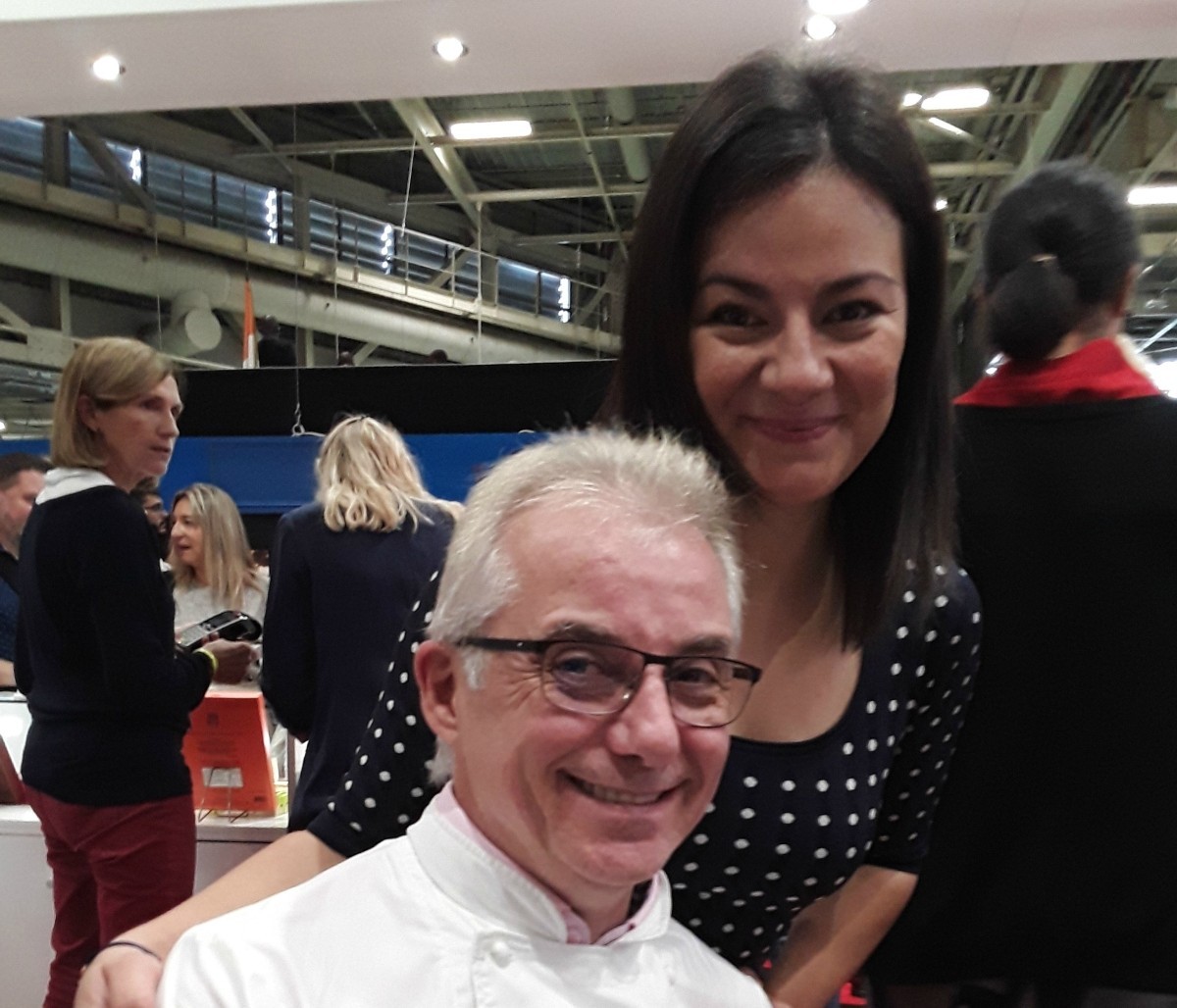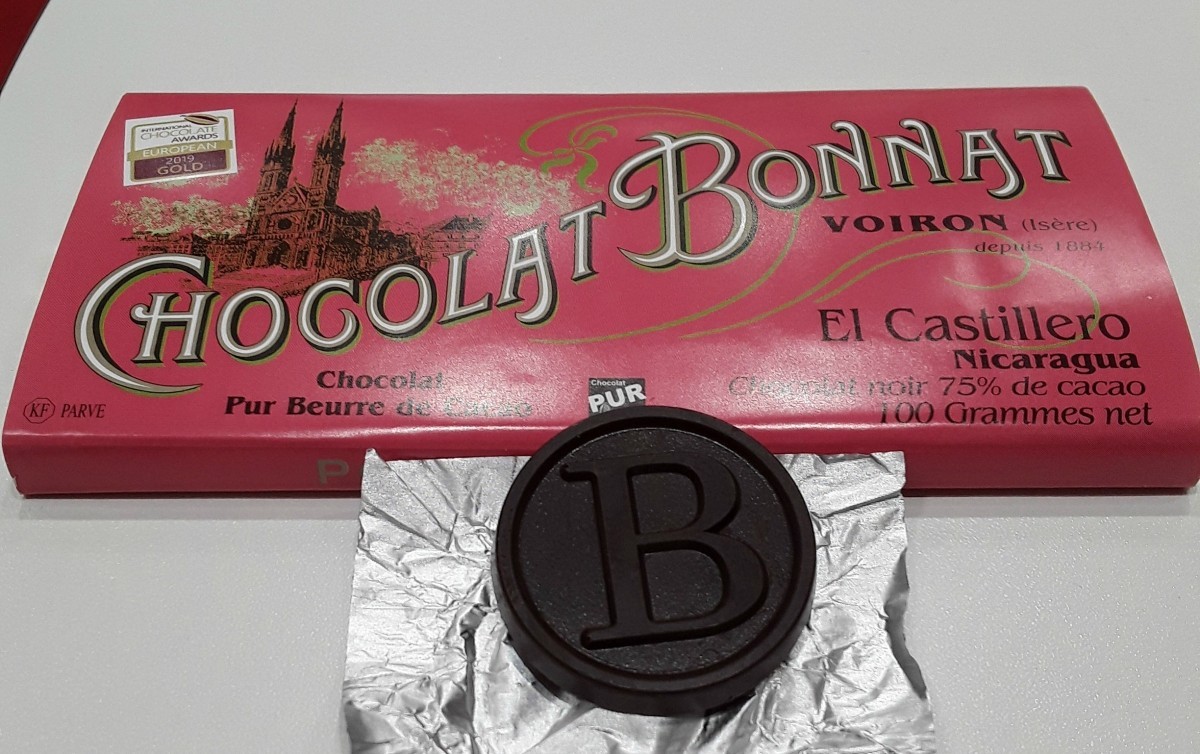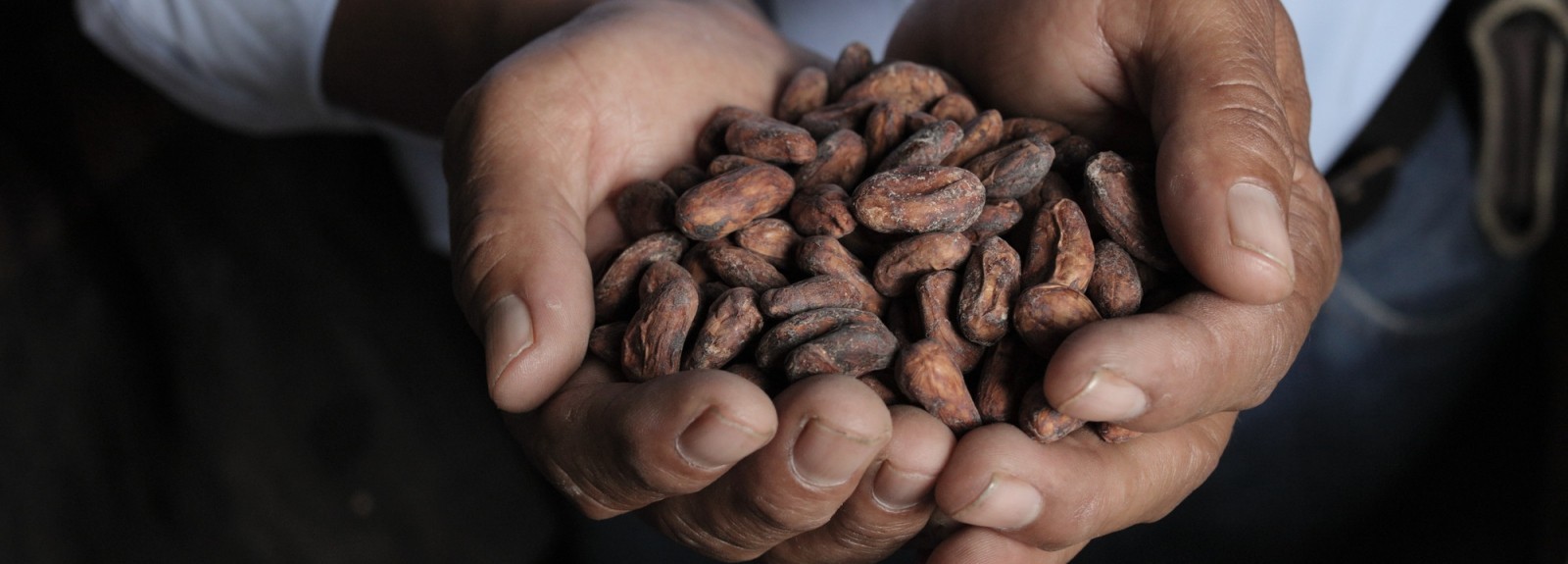By Carolina Aguilar, Lutheran World Relief’s MOCCA Director
I attended Salon du Chocolat, the world’s largest event dedicated to chocolate and cocoa, for the first time in 2013. Lutheran World Relief was looking to expand our networks within the specialty chocolate industry to benefit our farmer partners. What I learned at the Salon further highlighted a gap we had already been seeing in our efforts to improve the livelihoods of smallholder cocoa farmers in Latin America and Asia. Farmers were in need of a way to speak the same language and meet the standards of the specialty market, while buyers were in need of help finding new origins for their specialty cocoa.
To meet these needs, Lutheran World Relief, ZOTO and GUITTARD CHOCOLATE worked with 22 cooperatives across Honduras, El Salvador, and Nicaragua to develop 32 flavor profiles for their farmers’ cocoa. We then developed the Cocoa Flavor Map, a web-based tool to give these cooperatives a platform to showcase their high quality cocoa profiles and to give buyers a resource to locate the types of cocoa they want. We launched the flavor map at Salon du Chocolate 2016, and Stephane Bonnat was one of first chocolatiers to check it out at our table.
Mr. Bonnat liked the honey notes and fruity profile of El Castillero beans from one of the Cocoa Flavor Map’s cooperatives, COODEPROSA, and decided to use them in his new 75% cacao 100-gram Grand Cru chocolate bar. El Castillero Grand Cru was just launched at the 25th Salon du Chocolat, which is where I interviewed Bonnat and his wife and Chocolat Bonnat’s head of sourcing, Elisa Montiel, to find out more about their operations and what they look for in selecting origins for their chocolate.

How many origins does Chocolat Bonnat have now?
We have eight historical origins. Many of them are cocoa that comes to us from producers with whom the family has worked for 130 years. These are families that continue to produce cocoa from generation to generation and that continue to have a long-standing, mutli-generational commercial relationship with Bonnat.
For our 100th anniversary, my father decided to make a special edition of chocolate bars, Les Grands Crus, that would present cocoa in a way similar to wine. At the time, most chocolatiers mixed beans from different origins to obtain a consistent flavor profile. He is a wine lover, so he decided to keep the cocoa origins separate, like wine grapes, and present chocolates that had different aromatic profiles indicative of their origin.
We also have between eight to ten more origins, some that are more our own than others. There are two origins from Mexico where we manage absolutely everything — it is a Bonnat plantation. It has a fermentation center in which we control the post-harvesting. In Peru, there is the project in Madre de Dios, which we fund, where we manage the genetics, harvesting and post-harvesting.
We are very dedicated to providing technical support to cocoa farmers with whom we can work with over the long-term – those who really own their work and processes and can pass this knowledge on to future generations. We want the next generation of Bonnat chocolatiers to know where to buy cocoa that will have the ethical, technical and quality requirements that are necessary for the chocolate we make.
How often do you receive cacao samples from new origins? What do you look for in a new origin?
We receive many samples, and part of Elisa's job is to make a pre-selection of those samples and decide which we are going to try. The pre-selection of a sample is not dependent on the type of cocoa and the quality of the post-harvest. We want to know if the farming cooperative is working in a technical way, if they are really cooperating with the farmers, paying them on time, if they know what type of cacao they have, if the cacao they have is a local variety. We are not interested in cloned cacao — anything with numbers and letters in the name is discarded.
We use our intuition and give careful consideration to samples from cooperatives that we think have potential to be good partners.
To give you an idea, we process samples all summer long. Half of the sample that is processed is returned to the producer so they can see what their cacao tastes like when processed into chocolate. There are some samples to which we give more affection, care and attention because we know that there is something behind it that connects with us and speaks to us.

Chocolatiers Stephane Bonnat and Elisa Montiel
When you taste a new cacao sample for the first time, how do you assess the potential for that cacao to become a new Bonnat bar?
Much of the potential is in the people behind the cacao, as was the case of accepting El Castillero. When El Castillero came to us, the fermentation of the beans could have still been improved to reach its greatest potential. However, we learned about El Castillero and the farmers through Lutheran World Relief. When we saw how the farmers were striving to improve their cacao and build their business, that was the turning point for us to say, yes, we will use this origin for a bar, and we see it as a work in progress. I think this bar has even more potential to show.
Do you have a special preference in terms of flavor? Origin? Genetics?
Preferences change with what you feel over time. Our preference, for example, when we decided to set up the Selva Maya plantation was to rescue the ancient origins that were in Mexico. We prefer old cacao varieties that are ignored, are delicate and that require an ancient knowledge to handle. In the case of Selva Maya, for example, we have a calendar for pruning and fertilization that is linked to Mayan methods. Respecting ancient knowledge and the cacao that grows at the origin of where it really belongs is really important to us.
Why and how do you engage in “direct trade” at Chocolat Bonnat? What are the challenges you face?
We visit the farms on a regular basis. We spend many months of the year visiting the plantations, working closely with the farmers. We help with bean selection and the technical processing and monitor that production ethics and protocols are followed. Then we purchase the beans directly but use another company that specializes in moving cacao beans to help us import them.
In each country where we work, the challenges are different. Some are common to all the projects.
For example, in some countries people might abandon a project if the government comes with a new kind of economic assistance linked to a different way of doing things. In many cases, producers change their way of work for a one-time economic incentive instead of seeing the long term. In Latin America, this is very common as rural populations are used to receiving assistance each time governmental policy changes.
Another challenge is the people that might want to take advantage of producers, who might trick them for a once only buy. We stopped posting on social media about our work with farmers because there was a chocolate maker who knew us and would go to farms saying he was friends with Stephane Bonnat. He often tried to get some of their beans for free or tried to convince the communities to work with him without giving any technical assistance.
Constant follow-up, constant training is a challenge. Often in the morning or around midnight, Elisa is sending messages to producers when they have complications with a process, if it has not rained or if there is something to do. Obviously, distance is one of the great challenges. That is why it is important to have a close relationship with farmers, to find a farmer who can be our constant supplier and who wants to work with us for the long term. This requires creating incentives for the producers and for our company to maintain sustainable relationships that can truly last for the long term.

What do you like the most about El Castillero?
In terms of flavor, El Castillero’s taste became complex and exciting after a specific form of roasting was used. It has an unusual but delicious taste of cinnamon. But more than the flavor, what I like most about El Castillero is its people and its potential. It is produced by a group of people who love their cocoa and who are willing to work with us to make adjustments so that we get better cocoa. We hope this is a long-term relationship with the farmers of El Castillero. We hope this new Grand Cru bar isn’t here one year and then gone the next.
I also like that an organization like Lutheran World Relief is supporting them as well — that boosts my confidence in them.
Do you have any recommendations to give the farmers of El Castillero?
The recommendation is the same one we give to all farmers: they must remember every day that the work they do is very important and that a good job requires extra effort. They should have a good fermentation and drying process and take care of their trees. That is what makes the difference. They should remember that their work is what represents them and El Castillero in the world. Wherever we take this bar — Paris, Tokyo, Dubai — people will know El Castillero exists and its farmers are valued for their hard work.


